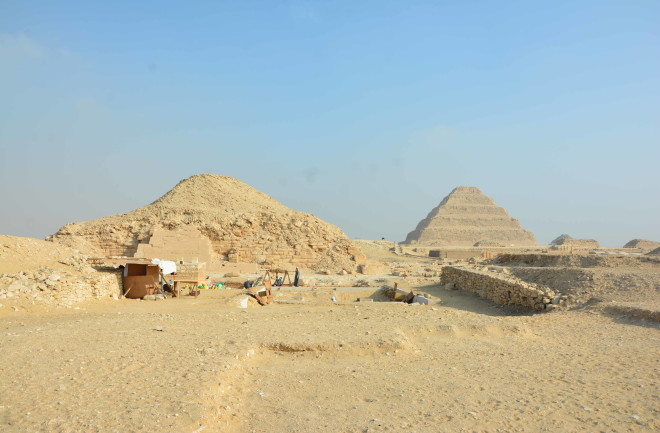Around 2,600 years ago, a small ceramic bowl sat in a subterranean workshop. Carrying hints of cedar and honey, the bowl was used by Egyptian embalmers to blend essential oils and beeswax for the multimonth process that transformed corpses into mummies.
Reciting incantations, removing organs, and applying substances that made bodies dry, fragrant, and microbe-free, the embalmers employed a multifaceted set of skills.
“They knew the ritual practices, but also [a] kind of chemistry,” says Maxime Rageot, a biomolecular archaeologist at the University of Tübingen in Germany.
How Did Egyptians Make Mummies?
Over the past four years, Rageot and colleagues have gained unprecedented insights into the substances and steps involved in ancient Egyptian mummy-making. Their analysis of molecules trapped in pottery, as published in a Nature paper from February 2023, revealed that embalmers sourced ingredients from surprisingly far-flung lands for their specific biomolecular properties.
The Egyptians perfected the practice of mummification over the course of several thousand years, transforming the natural desiccation of bodies into a sophisticated ritual and chemical process between the fifth and first millenniums B.C.E. During the time of the pharaohs, professionals spent up to 70 days transforming a tender corpse into a linen-wrapped, afterlife-ready mummy — treating it with spells and prayers, as well as substances that mitigated moisture, bacteria, fungi, and stink.
But scholars have long debated how to translate the ingredients named in ancient inscriptions and papyri, meaning that much of the mummy recipe has remained a mystery. And while some ingredients have been identified from the molecular analyses of mummies from museums around the world, these methods cannot reveal how specific substances figured into the mummification process — whether they were applied to the bandages or the head, for instance, for the purpose of preserving tissues or fending off bacteria.
The possibility of linking substances and steps arrived in 2018, when the late archaeologist Ramadan Hussein invited Rageot to join his excavations at Saqqara, an ancient city about 12 miles south of Cairo. There, Hussein’s team had uncovered an ancient facility for treating and storing corpses, dated to around 664 to 525 B.C.E. Featuring a workshop more than 40 feet underground, the facility held over 100 pottery vessels bearing instructions like “to make the odor pleasant,” “for making beautiful the skin,” and “head, boil.”
Analyzing the Ancient Mummification Process
Selecting 31 of these pots for closer analysis, Rageot set out to identify their long-lost contents. But because Egypt lacked a specialized laboratory for this kind of work, he and his team brought the pots to a local food chemistry lab, which they converted into one of the country’s only facilities for analyzing ancient biomolecules. Drilling pinches of clay powder from the pots’ interiors and analyzing the powder in the lab’s mass spectrometer, they determined which ancient molecules had seeped into the pottery’s pores.
The successful analyses of the pots revealed embalmers used diverse and exotic materials that could curb moisture, smells, and mummy-munching organisms: Bitumen tar probably from the Dead Sea; pistachio, juniper, and olive oils from the Mediterranean; and tree resins from the tropical forests of Asia and possibly sub-Saharan Africa. To source these items, the embalmers relied on trade that spanned much of their known world.
“The diversity of bioproducts which were used,” Rageot says, “was really impressive.”
Now that the Egyptian lab exists, the researchers plan to analyze mummy-making ingredients from more sites. Their hope is to trace how mummification transformed across time and space, applying modern chemical methods to unravel their ancient counterparts.
This story was originally published in our January February 2024 issue. Click here to subscribe to read more stories like this one.

